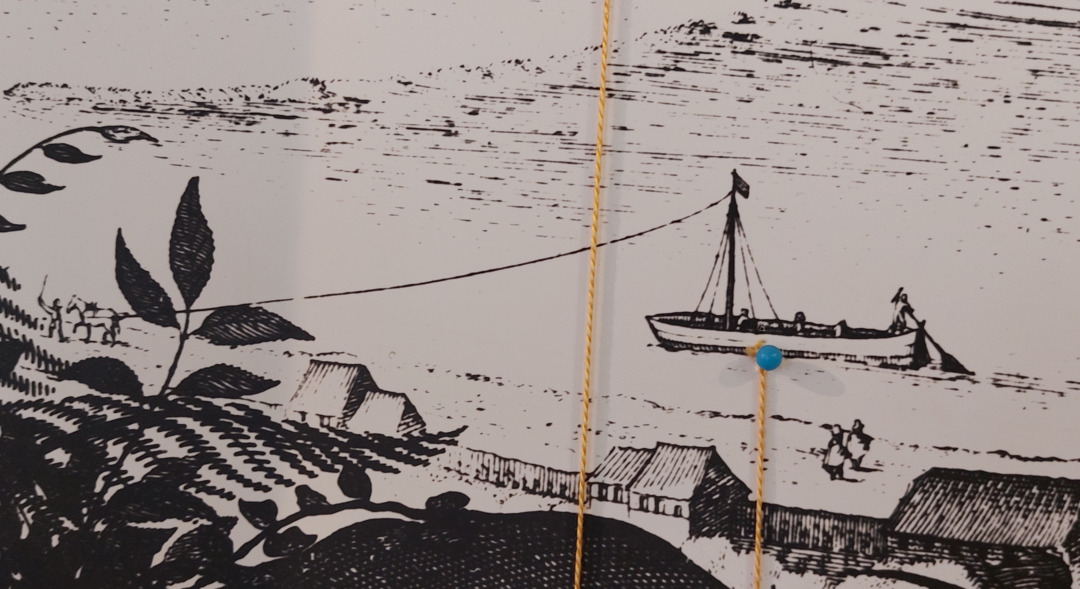
Downstream, the ships travelled with the current of the water. Up the river, they had to be pulled from the shore. Either with human power or with horses. This was called towing.
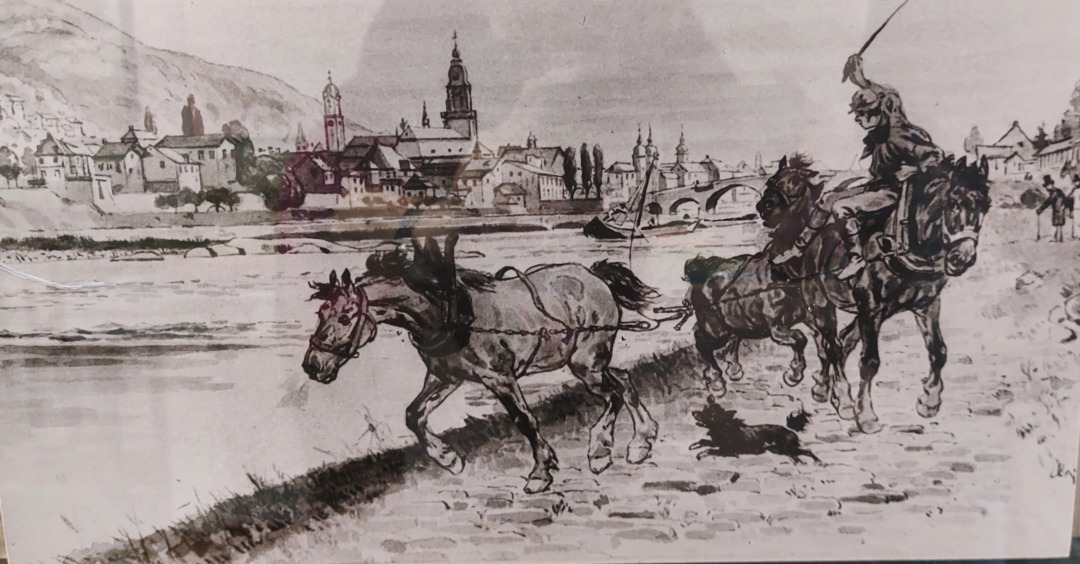
To make this possible, there was a towpath that ran along the shore and had to be kept free of bushes and trees. The "Treidelschifffahrt" was replaced in 1878 by the invention of the "Kettenschlepper".
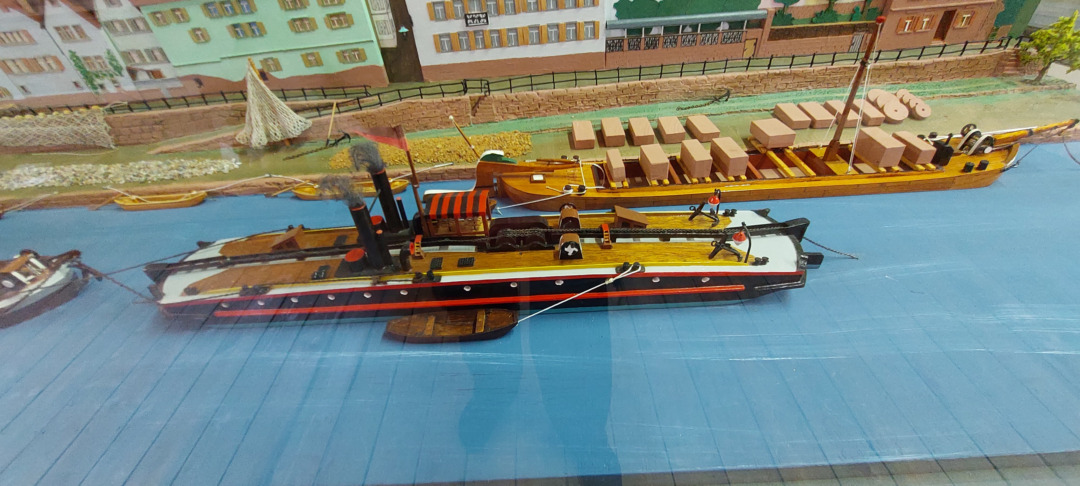
The "chain tug" was a special invention. Chain tug shipping revolutionised river navigation in that a single chain tug powered by a steam engine could pull many unpowered barges - so-called towboats - at low cost. The chain was continuous, following the river windings, in the middle of the river. From Mannheim to Heilbronn. The chain was lifted out of the water at the bow of the ship via an extension, a boom. It was pulled across the deck on guide rollers by chain drums driven by a steam engine. The chain drive was in the middle of the ship. Power was transmitted from the steam engine to the chain via a drum winch. From there, the chain led across the deck to the boom at the stern and back into the river. Due to the lateral mobility of the boom and the two rudders mounted both in front and behind, it was possible to put the chain down again in the middle of the river even when the river bent. Chain navigation began on the Seine in France and on the Elbe in Germany. The chain ships not only travelled upstream, but also downstream. This resulted in time-consuming and complicated crossing manoeuvres when upstream and downstream ships met - the downstream ships had to be disengaged from the chain and then re-engaged later. After the canalisation of the Neckar in 1935, the loud rattling chain tug was replaced by quieter steamships with propellers. Today, motor ships transport the goods as far as Plochingen. From there on, the Neckar is no longer navigable for such large ships.

In the middle of the room is a model of the famous "chain tug" in front of the Eberbach town front, around1900 . You can clearly see the chain running over the rollers in the middle of the ship. The chain tug goes uphill with 3 barges. On the Lauer, the quay between the city wall and the river, typical products from the area lie waiting to be transported further: sandstones, stone troughs, grinding wheels, tree trunks, gravel and sand. Gravel boats and fishing boats are moored on the Lauer.
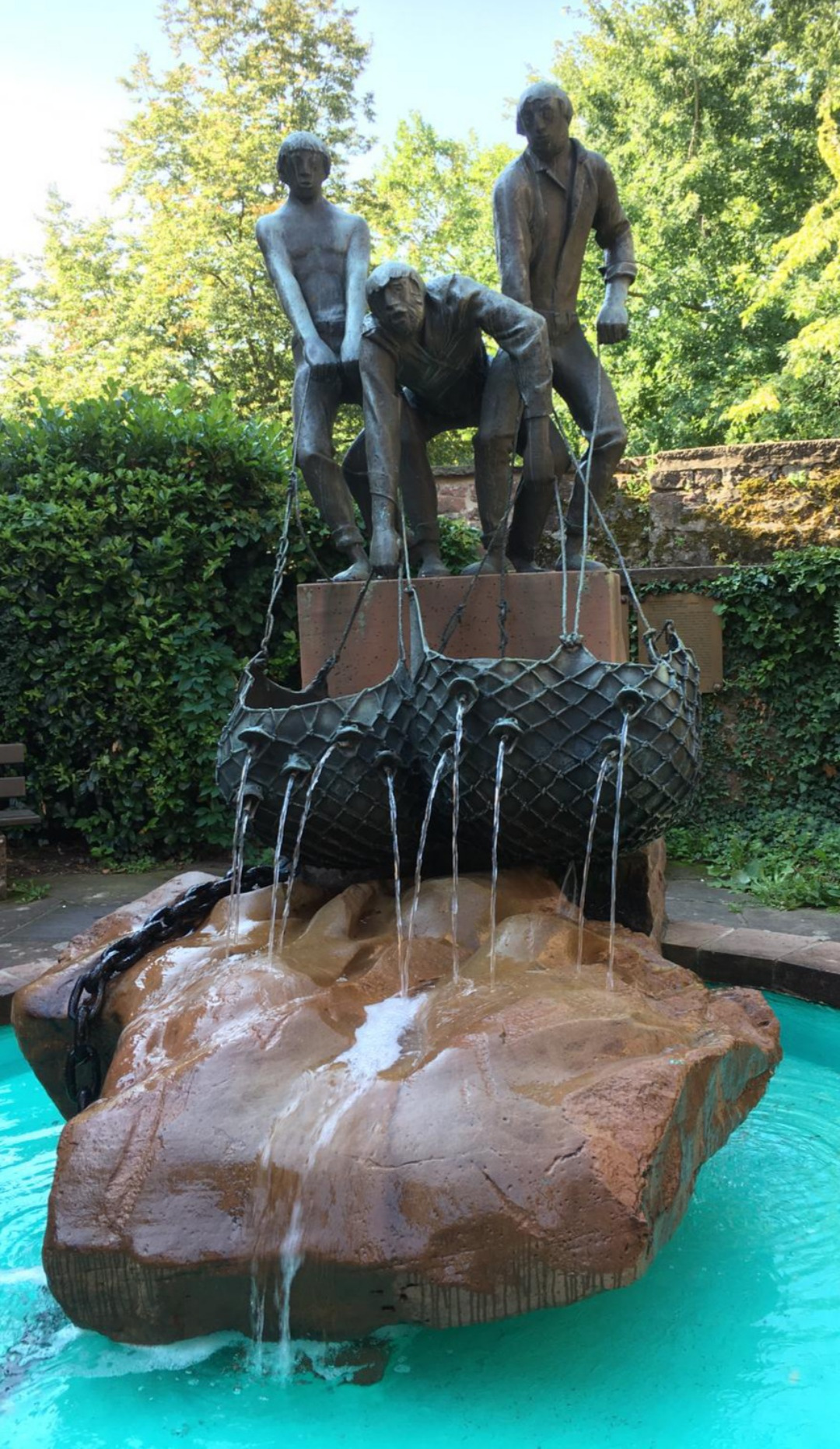
Incidentally, the fishermen's fountain near the Powder Tower has a river stone built into it that was found while dredging in the Neckar and clearly shows the grinding marks of the chain on the river bottom.
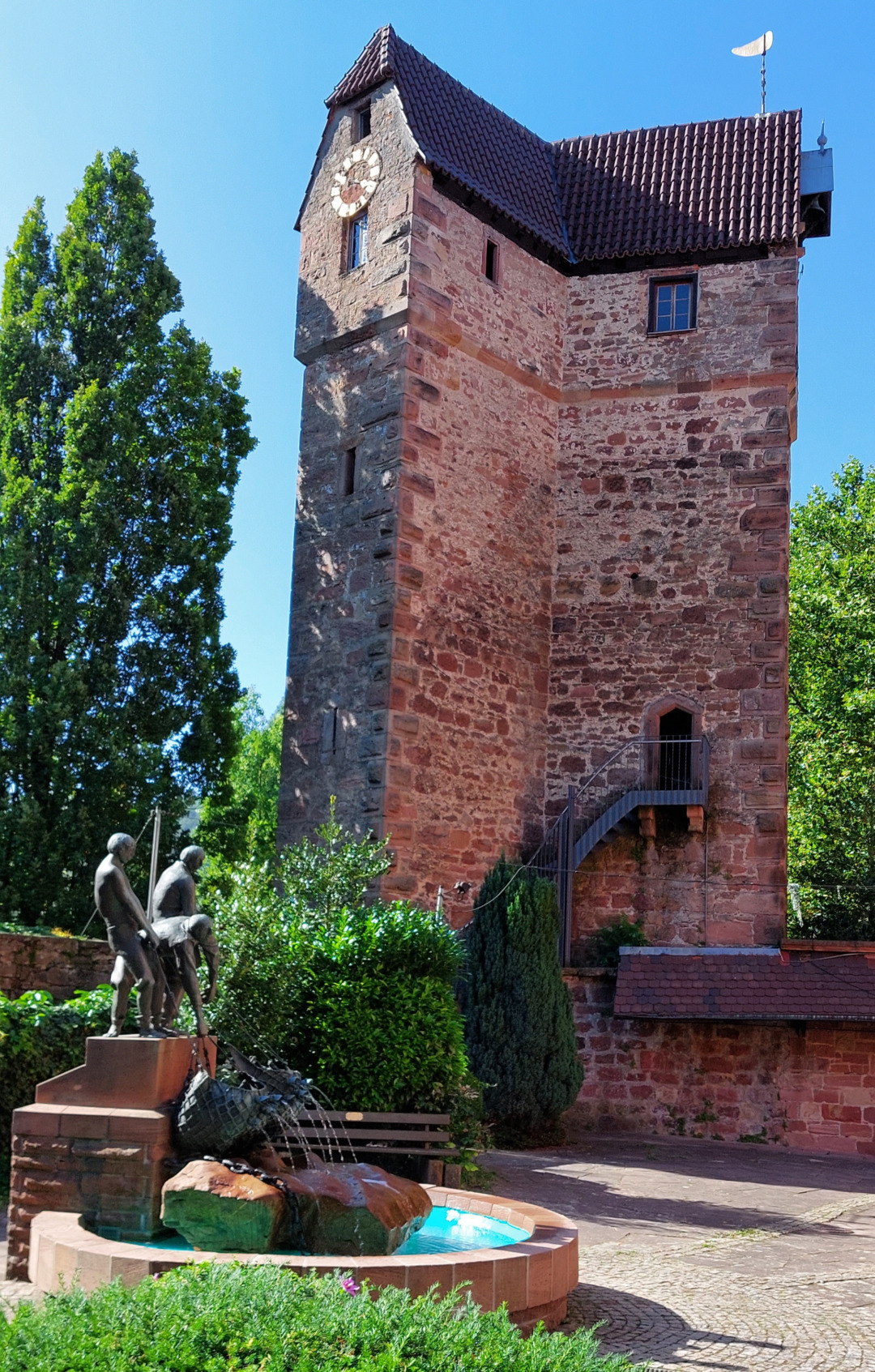
The distinctive Powder Tower was the south-western observation post of the old town fortifications and can be seen from the riverbank to the left of the staircase gables of Thalheim's house.